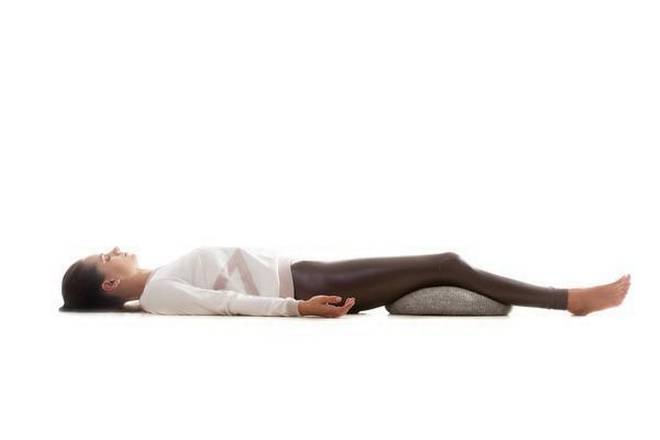Yoga, for regular practice, to prevent the onset of a migraine
A migraine is usually triggered by stress, sleep disturbances, hormonal imbalances, anxiety, a change in weather, or really any extreme condition — even loud noises or too-bright lights. You’ll start to feel the headache coming on around the neck and the shoulders. The regular practice of yoga will improve circulation and the oxygen level in the body, and release pressure.
BALASANA (child pose)
Get down on your knees, and join the big toes, thighs and knees together. Place the palms on the floor and separate the knees as wide as you can making sure that you are comfortable. If you’re not, place a bolster between the knees. If your hips don’t touch the ankle, place a blanket under the feet if you feel uncomfortable.
Inhale; raise the arms, extending the spine.
Exhale; bend forward and rest the torso on the floor between the knees. Make a pillow with the palms and rest the forehead on the palms. If the torso does not rest on the floor, place a bolster in the middle and rest the torso on it.
Breathe deeply for 1 to 2 minutes. Remember to stay still and avoid movement while you hold the pose. This is very important as there is no forcing, striving or pushing while you are in the pose. We are working on just being present in the moment.
Inhale; raise the arms up and as you exhale lower the arms and release the pose.
Benefits: This calms the mind and the focus shifts to the breath. It releases tension from the spine and the hips, releasing tension and fatigue.
PADAHAST ASANA (forward bend)
Stand with legs hip distance apart, both hands on the waist.
Inhale; elongate the spine and as you extend forward from the hips, exhale. Bend the knees if the hamstring is tight. Place the finger tips on the floor making mountains of the hands.
Inhale; extend the spine and as you exhale open the palms towards the ceiling and turn the fingers towards the toes. Lift the toes and slide the palms under the feet. Make sure that the toes touch just below the wrist.
Inhale; lengthen the spine and as you exhale, press the toes on the palms, coming further forward.
Stay in this pose for 5 to 8 breaths. Inhale; lift the head up, and release the palms. Exhale; lift the torso up and place the palms on the waist.
Benefits: This releases tension from the torso and relieves stress.
UPAVISTHA KONASANA (wide-angle forward bend)
Sit on the floor with legs stretched as wide out as you can in front. Place the palms behind, a few inches away from the hips. Lean the torso slightly back on your palms, lift the hips up, and slide forward to open the legs wider, if you can. Place a bolster or a blanket under the hips. If the hamstring is tight, bend the knees slightly. Place one bolster between the legs.
Inhale; raise the arms up, palms parallel to each other.
Exhale; tuck the chin down towards the chest, bringing the torso forwards, bending from the hip, and resting it on the bolster. Place the palms on either side of the bolster and let the body sink on the bolster. Turn the neck to any side, to facilitate deep breathing.
Stay in this pose for 1 to 2 minutes, breathing deeply and softly.
Inhale; keeping the chin towards the chest, slowly roll up gently. Hold the knees from behind and drag the legs in towards the body. Join the legs together and stretch them out.
Benefits: This pose is excellent pose to calm the mind and to release all that we are holding on to in the mind. At the same time it open up the hips and decompresses the spine releasing tension from the lower back.
SAVASANA (corpse pose)
This is pose is best described as alert relaxation, so the body and mind have a chance to synthesise all the actions, instructions, and sensations. It induces muscle relaxation and induced inner stillness with high energy.
Lie down on the floor, legs apart, arms away from the body.
Roll the neck from side to side and back to the centre. Make the body comfortable. Place a bolster under the knees if you feel the need.
Start to connect to the each part of the body and relax that part. Release all the thoughts from the mind and focus on the breath.
Stay in this position without movement and feel the body relax.
Gently move the toes and the fingers and slowly the rest of the body after 20-30 minutes.
Roll on to the left side and sit up with the spine straight. Rub the palms together and open the eyes.
Seema Sondhi discovered yoga when she suffered three lumbar slipped discs and was advised complete bed rest. Over the last 18 years, she has trained and been certified from the International Sivananda Yoga Vedanta Centre and Matthew Sweeney. She has also written six books on the subject








